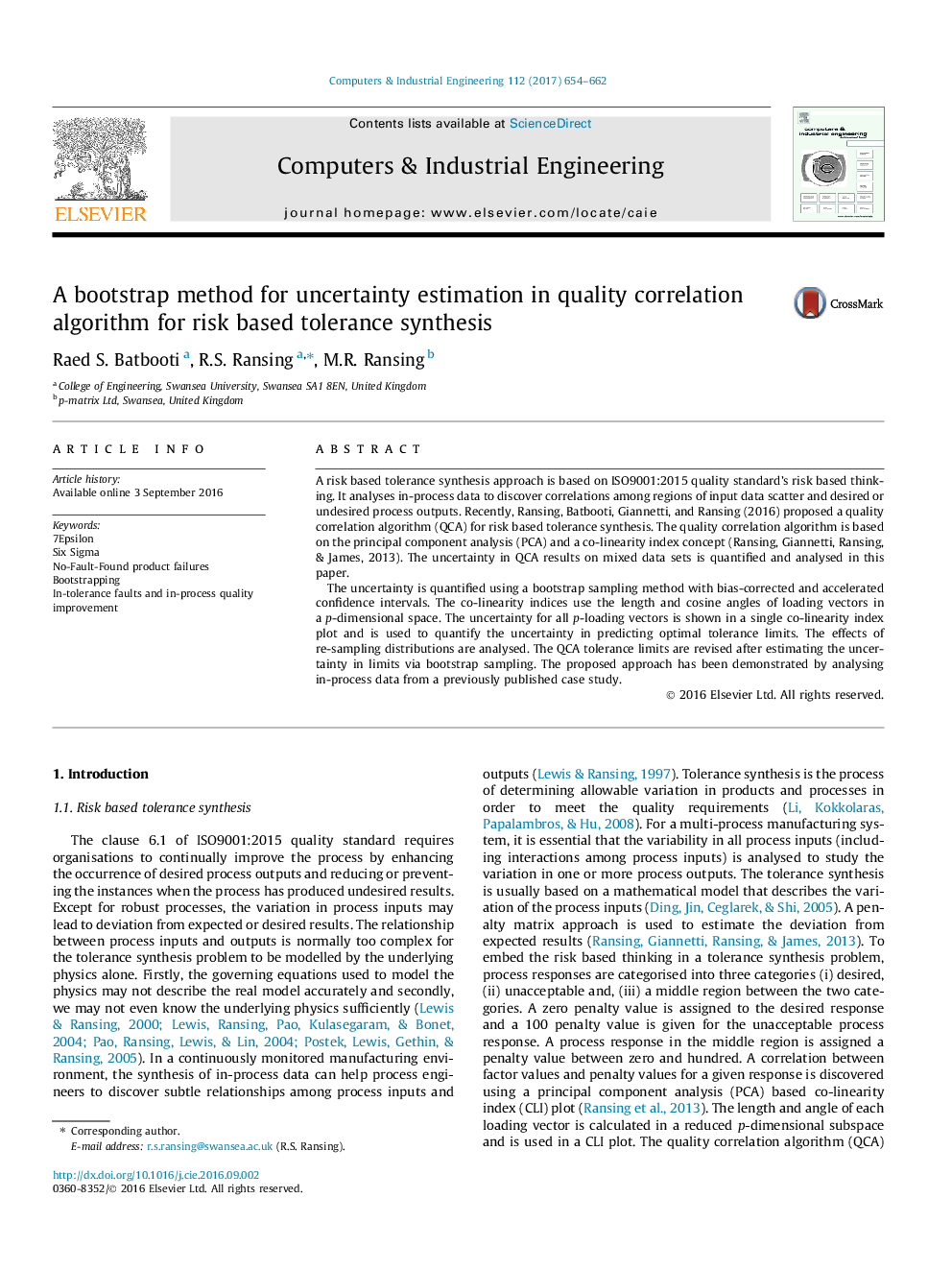| Article ID | Journal | Published Year | Pages | File Type |
|---|---|---|---|---|
| 5127543 | Computers & Industrial Engineering | 2017 | 9 Pages |
â¢An approach to embed ISO 9001:2015's risk based thinking for in-process quality improvement is proposed.â¢The uncertainty in the quality correlation algorithm has quantified using an enhanced bootstrap method.â¢The algorithm determines robust optimal and avoid ranges within the process variation including process interactions.
A risk based tolerance synthesis approach is based on ISO9001:2015 quality standard's risk based thinking. It analyses in-process data to discover correlations among regions of input data scatter and desired or undesired process outputs. Recently, Ransing, Batbooti, Giannetti, and Ransing (2016) proposed a quality correlation algorithm (QCA) for risk based tolerance synthesis. The quality correlation algorithm is based on the principal component analysis (PCA) and a co-linearity index concept (Ransing, Giannetti, Ransing, & James, 2013). The uncertainty in QCA results on mixed data sets is quantified and analysed in this paper.The uncertainty is quantified using a bootstrap sampling method with bias-corrected and accelerated confidence intervals. The co-linearity indices use the length and cosine angles of loading vectors in a p-dimensional space. The uncertainty for all p-loading vectors is shown in a single co-linearity index plot and is used to quantify the uncertainty in predicting optimal tolerance limits. The effects of re-sampling distributions are analysed. The QCA tolerance limits are revised after estimating the uncertainty in limits via bootstrap sampling. The proposed approach has been demonstrated by analysing in-process data from a previously published case study.
